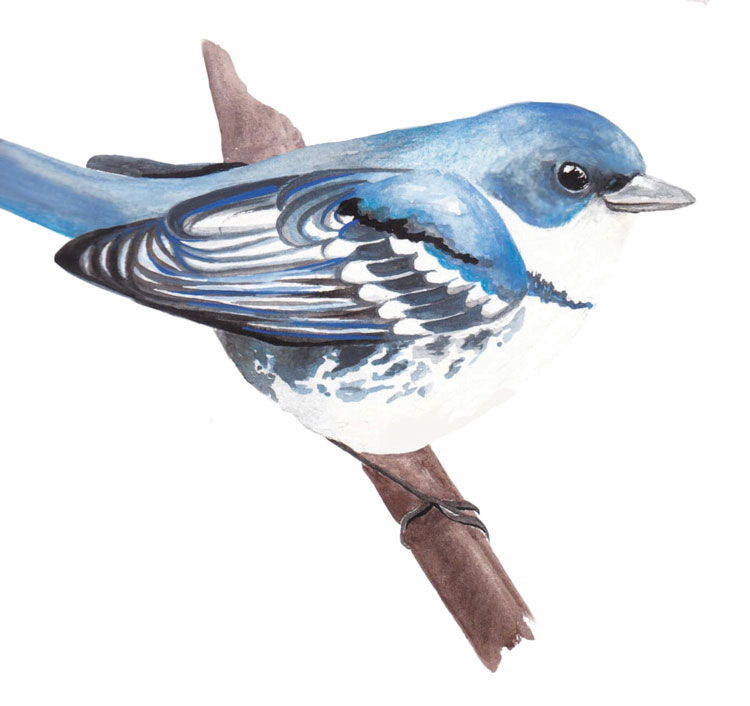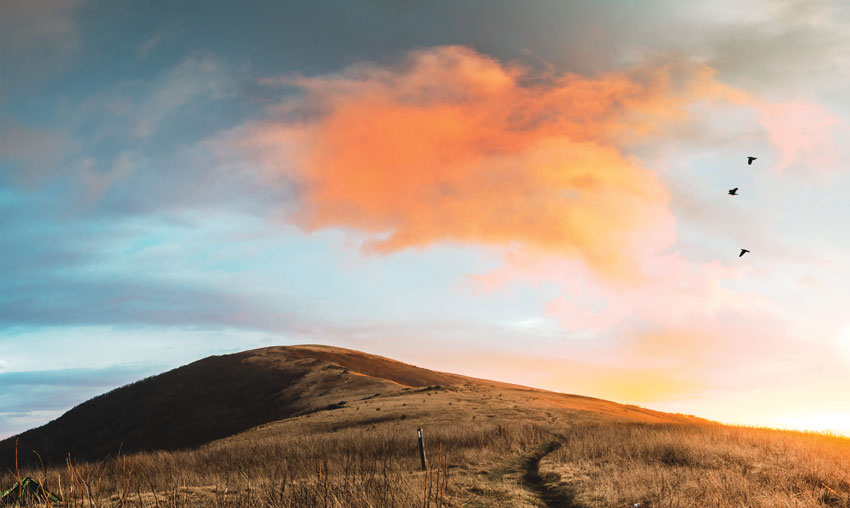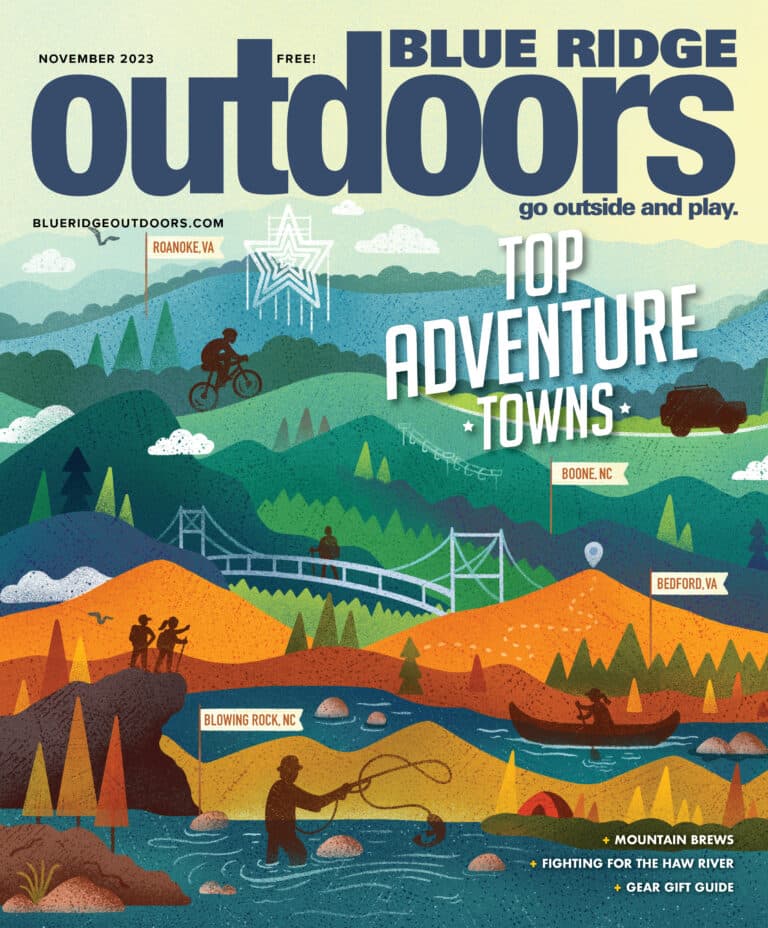The Unsung Adventure of Birdwatching in the Blue RidgeI
It is a foggy morning in the mountains, and as I hike through a thicket of Fraser fir, there are glimpses of the winged creatures I’ve come here looking for. The sun rises below me in a pink sea of clouds, and as I take in this moment I realize that I would not be here if I weren’t in search of birds.
I’m here to view the migration of large predatory birds, collectively known as raptors. Each spring and autumn, millions of birds migrate through the South, searching for northern breeding grounds in the summer and equatorial abundance in the winter. Raptors gather in massive flocks known as kettles during migration. So, here on top of this mountain, after the sun has fully risen, I look over the valley below to see over a thousand broad-winged hawks soaring on thermal air currents. I am immersed in the astonishing sight of this grand gathering of mighty predators.

Birders are as diverse as the birds they seek. While birding has traditionally been associated with older crowds, a broader audience is now captivated by the world of birds. Many mountain bikers, climbers, paddlers, and runners include birding in their outdoor expeditions.
For myself, the moment that I started noticing birds happened while whitewater rafting the Rio Pacuare in Costa Rica. A flock of 30 keel-billed toucans flew overhead and found perches along the rock faces of the river gorge. Since then, I’ve seen anhingas spear fish while canoeing the Everglades, watched American dippers plunge into the frigid waters of the Grand Tetons while backpacking, and observed bald eagles taking care of their young while on a run in northern Montana. All it takes to start birding is a sense of curiosity and keen observation.
Don’t be intimidated by memorizing species or songs. Let the accumulation of observations during your adventures guide your knowledge of these amazing creatures.
Wherever we go in the outdoors birds are present. They disperse seeds, eat insects, and even pollinate plants. In Southern Appalachia, the Northern saw-whet owl, usually only seen year-round in the northern reaches of the continent, can be found in high elevation spruce-fir forests on Mount Mitchell and Roan Mountain. Camping at night on the peaks of our 6,000-foot mountains, hikers often hear the distinctive “too-too-too” whistle of this tiny owl just before it swoops down to snag its prey.
The cerulean warbler, a beautiful sky-blue songbird, only breeds in small pockets through the South. Flitting through the canopy on the rugged slopes of the Blue Ridge, cerulean warblers make their homes in oaks, maples, and magnolias in openings in the forest. Along steep trails on north-facing slopes, these magnificent uncommon birds can be seen—or heard—during a hike, bike, or run.
Cerulean warblers have seen a 72% decline since 1970 due to habitat loss in both North and South America. The Northern saw-whet owl is a species of conservation concern in North Carolina, as its range is restricted to only the highest peaks in the state. Since both of these species have unique and specific habitat requirements in the region, it is all the more important to protect our public lands, as we are not the only beings relying on them. Birds are all around us, and many rely on the places in our national forests and parks that we too cherish. Supporting the work of local Audubon Societies and conservation groups can help save the places that birds and humans share with one another.
One of the best parts of birding is that it naturally attunes us to the seasons. The migrating raptors signal autumn’s arrival. Then the winter waterfowl—blue-winged teals, canvasbacks, and hooded mergansers —will cover the surfaces of our southern lakes and ponds. And before long, the squeaky-wheel call of the first black-and-white warbler will announce the arrival of spring.
Birding is an exciting, stimulating way to explore the outdoors and bring us even closer to our favorite places. By exploring the natural world—whether it be by foot, bike, paddle, rope, or binocular—the places we love are made even more magical by the presence of our winged companions.
For the Birds
Want to help protect the places where we play—and the places that birds depend on? These organizations are working to protect public lands and bird habitat across Southern Appalachia:
Audubon NC: nc.audubon.org
IHeartPisgah: iheartpisgah.org
MountainTrue: mountaintrue.org
Blue Ridge Conservation Alliance: blueridgeconservation.org
Southern Environmental Law Center: southernenvironment.org








